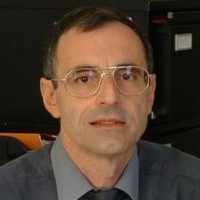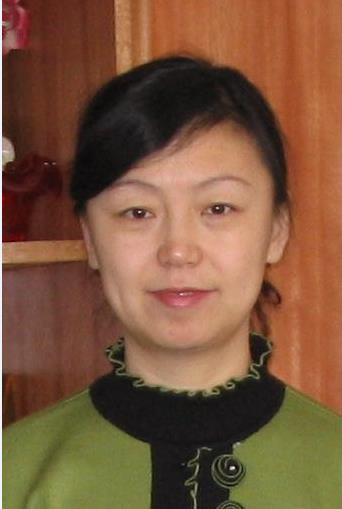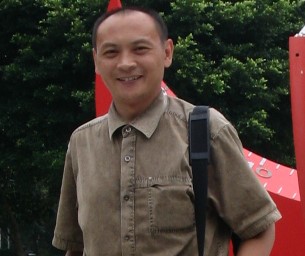Keynotes
1 Mastering randomness via chaos theory
Prof. René Lozi

University of Nice-Sophia Antipolis, France
Professor René Lozi received his Ph.D. from the University of Nice in 1975 and the French State Thesis under the supervision of Prof. René Thom in 1983. In 1991, he became Full Professor at Laboratoire J.A. Dieudonné, University of Nice and IUFM. He has served as the Director of IUFM (2001-2006) and as Vice-Chairman of the French Board of Directors of IUFM (2004-2006). He is member of the Editorial Board of Indian J. of Indust. and Appl. Maths and J. of Nonlinear Systems and Appl., and member of the Honorary Editorial Board of Intern. J. of Bifurcation and Chaos. In 1977 he entered the domain of dynamical systems, in which he discovered a particular mapping of the plane producing a very simple strange attractor (now known as the "Lozi map"). Nowadays his research areas include complexity and emergences theories, dynamical systems, bifurcation and chaos, control of chaos and cryptography based chaos. He is working in this field with renowned researchers, such as Professors Leon O. Chua (inventor of "Chua circuit") and Alexander Sharkovsky (who introduced the "Sharkovsky's order").
Web site:http://landaverde.academia.edu/Ren%C3%A9Lozi
Abstract:
Random numbers are useful for a many purposes, such as cryptography, modeling in ecology, games and gambling, and for selecting random samples from larger data sets. Instead of wasting time in tossing coin, which is largely insufficient for generating billions of random numbers, computers are nowadays used routinely for such generation. Generally one distinguishes between true random numbers, pseudo-random numbers and chaotic numbers.
True random number are only generated by physical devices of phenomena, they are non deterministic, however they are difficult to produce in large amount and at fast pace, due to the necessarily interface between physical device and computer. Pseudo-random numbers are widely used however the most common formulas producing them are not very flexible, they are deterministic. Chaotic numbers when used in raw form are easily recognizable. However it is possible to combine chaotic numbers in such a way that they produce pseudo-random numbers of very good quality, passing every NIST test.
The tremendous development of new IT technologies, e-banking, e-purchasing, Internet of Things, etc., nowadays, increases incessantly the needs for new and more secure cryptosystems. They are used for information encryption, pushing forward the demand for more efficient and secure pseudo-random number generators in the scope of chaos based cryptography. Indeed, chaotic maps show up as perfect candidates able to generate independent and secure pseudo-random sequences (used as information carriers or directly involved in the process of encryption/decryption). We explore several topologies of network of 1-D coupled chaotic mapping (mainly tent map and logistic map) in order to obtain good Chaotic Pseudo Random Number Generators (CPRNG). We focus first on two-dimensional networks. Two topologies are studied: TTLRC non-alternative, and TTLSC alternative. In this case, those networks are equivalent to 2-D maps which achieve excellent random properties and uniform density in the phase plane, thus guaranteeing maximum security when used for chaos based cryptography.
Moreover an extra new nonlinear CPRNG: MTTLSC is proposed. In addition, we explore topologies in higher dimension and the proposed ring coupling with injection mechanism enables us to achieve the strongest security requirements.
2 Asymptotic Behavior, Self-organization and Synchronization of Complex Network of Neuronal Reaction-Diffusion Systems
Prof. M.A. Aziz-Alaoui

Applied mathematics, University of Le Havre, Normandy, France
Prof. M.A. Aziz-Alaoui is full Professor of Applied Mathematics in Le Havre University, France. In 1987 he obtained the Ph.D. degree in mathematics at the University of Nice, France, where he was employed as a lecturer from 1987 to 1990. In 1991 he was employed as associate-professor in the university of Le Havre, (Normandy - France). In 2001, he received the Habilitation of Applied Mathematics from the University of Le Havre, where he is currently the head of the "Dynamical and complex Systems, Evolution Problems, Team in the Math. Lab. His current research interests in nonlinear dynamics include chaos theory and bifurcation, synchronization, complex systems, and bio or ecological modeling. M. Aziz-Alaoui has also supervised many PhD and Master degree thesis. Currently, he is especially interested in the relationship between chaos-synchronization and complex systems and in the understanding of self-organization and emergent properties arising from natural and artificial systems. He organized conferences and workshops on these topics, and contributed to many international conferences organizations, and the co-editor in chief on the international Journal of Nonlinear Systems and Application
Web site:http://lmah.univ-lehavre.fr/~alaoui/cv_ENGLISH.html
Abstract:
We focus on the long time behavior of complex networks of reaction-diffusion (RD) systems. We prove the existence of the global attractor and a L^{\infty}-bound for a network of n RD systems with d variables each. This allows us to prove the identical synchronization for general class of networks and establish the existence of a coupling strength threshold value that ensures such a synchronization. Then, we apply these results to some particular networks with different structures (i.e. different topologies) and perform numerical simulations. We found out theoretical and numerical heuristic laws for the minimal strength coupling needed for synchronization relatively to the number of nodes and the network topology, and discuss the link between spatial dimension and synchronization.
3 Complex Networks Morphodynamics – Concepts, Algorithms and Implementation
Prof. Cyrille Bertelle

University of Le Havre, Normandy, France
Prof. Cyrille is Vice-president of research and development at LeHavre University. He is a professor in Computer Science and Complex systems modeling and stimulation. He is a member of the Research Laboratory LITIS at Le Havre University, Normandy. He is the co-founder of the ISCN, the Institute of Complex systems in Normandy. He obtained his PhD in 1991 at Le Havre University specialized in numerical analysis. Since October 1991, he is a lecturer at the UFR of sciences and techniques at LeHavre university. Since September 2005, he is a university professor at the UFR of sciences and techniques at LeHavre University.
Web site:https://sites.google.com/site/cyrillebertelle/
Abstract:
One of the main characteristics of complexity is the emergence of properties due to dynamical processes. Our objective is to contribute to the formalization of these emergent properties studying dynamical structures. The structures of complexity proposed here, are interaction systems as the core of self-organization mechanisms. Dynamical networks are efficient tools to express some local or global properties of evolving topology. They capture structural aspects of complex systems representing entities as nodes and interactions between them as links. The presentation presents adaptive algorithms for complex networks dynamics, leading to identify emergent organizations in these networks. One of these algorithms, named AntCo2, is bio-inspired by social insect system behavior and lead to detect emergent structures inside complex networks. Some applications are presented relating to urban morphodynamics analysis of the communication networks of the city. Practical study case are developed to analyze network vulnerability in case of urban technological risk, using Multi-scale measures on dynamical complex systems. The simulations and results detailed in this presentation, are powered by the GraphStream Library which is a java package for dynamic complex networks (http://graphstream-project.org).
4 Chaotic Stream Cipher and Its Applications Based on Hardware Logic
Prof. Qun Ding

Electronic Engineering Institute, Heilongjiang University, China
Qun Ding, Professor of Electronic Engineering institute, Heilongjiang University, doctoral tutor. Master and doctor in Harbin Institute of Technology. Now as president of Electronic Engineering institute, physical electronics leading talent echelon leaders of Heilongjiang Province, China Electronic Measurement and Instrument Branch Committee, special allowance experts of Heilongjiang Province, Vice president of Institute of Electronics, Instrument Society of Heilongjiang Province, vice chairman communication’s editorial, electronic measurement and Instrument editorial etc. Mainly engaged in secure communication, automatic test teaching and research work. Hosted 3 projects of National Natural Science Foundation of China, 2 projects of provincial and ministerial research, also hosted 12 horizontal projects. Heilongjiang Province Science and Technology Award prize two, Heilongjiang Province teaching achievement prize four, won four national invention patents, published SCI, EI more than 90 papers.
Abstract:
Nowadays, in secure communication systems embedded encryption is absolutely mandatory, for which hardware logic encryption can perform encryption in high speed, with excellent safety performance, and also possessing the advantage of easy connection between communication equipment. It is well known that initial chaotic data are extremely sensitive, where the cipher key space is infinite, therefore a chaotic system complexity is high and the output sequence is random, so it can realize highly complex nonlinear sequence generation. As a result, chaotic cipher based on hardware logic will play an important role in future applications. This paper describes the sequential codes based on chaotic hardware logic and shows some of its applications, including discrete chaos circuit and performance analysis, chaotic quantization circuit design, chaotic key stream performance testing and analysis, chaotic encryption core design, chaotic encryption interface card, and chaotic encryption systems. In this paper, we focus on hardware-based chaotic logic sequence code and its applicable methodologies and processes, with applications in chaotic performance testing and analysis of key sequences, as well as the research progress in designing chaotic encryption systems.
5 Secure construction of public key cryptosystem based on Chebyshev Chaotic map
Prof. Geng Zhao

Beijing Electronic Science and Technology Institute, Beijing, China
Geng Zhao is a professor in the department of computer science and technology, Beijing electronic science and technology. He is the director in the key laboratory of Central Committee for the new form cryptography research. He has become evaluation experts of the national science and technology prize and General Office of the Central Committee science prize. As the main researcher and director, he has won the ministerial appraisal achievement three times, national science and technology progress prize of cryptography (chaotic cryptography and its application research, ministry), and the national defense science and technology progress third prize. He has achieved five national invention patents (including four national defense invention patents, confidential). In 2001, he became the national 100 excellent doctoral candidate. At present, he has published more than 100 academic papers, of which more than 60 retrieved by SCI/EI. As the main participants, he has taken part in three national natural science fund projects (Nos. 69772041, 70071047102700) and key projects of national natural science foundation (No. 70431002). He has been invited to Hong Kong as a senior visiting scholar and took charge of one cryptography fund projects (Internet network real-time interactive video communication based on chaotic encryption). As a director, he has completed one China postdoctoral science foundation (No. 2002032129, chaotic cryptography research in the application of computer network communication) and two project of national natural science foundation of China (No. 70371068, the complex network system of chaos and its synchronization research; No. 60773120, chaotic cryptography analysis and its design criteria research, finished in March 2007 and December 2007, respectively). He has finished the project of Beijing natural science foundation (No. 4092040, block cipher based on chaotic system and its security research). At present, he focuses on the research of national natural science fundation projects (No. 61170037, chaotic public-key cipher algorithm design and analysis research). As one of the national network science BBS meeting organizing committee, he takes an active part to host the meeting for many times, promoting the rapid development of network security and the chaotic communication. He has conducted more than 25 cipher machine design and other projects, creating social and economic value more than 150 million RMB. His main research direction includes chaotic cryptography and its application, network science, and secret communication.
Abstract:
Public key cryptosystem Chebyshev chaotic map based, firstly proposed by L. Kocarev in 2003, has emerged as a new research field in cryptography and attracted a lot of attentions in recent years. Although provable security in traditional public key cryptosystem has already been developed twenty years, no relevant security proof research has been found about chaos-based public key cryptography. Aiming at the disability of Kocarev’s scheme to resist against the adaptive chosen ciphertext attack, we construct a new scheme based on Chebyshev chaotic maps, which takes the advantage of one-way Hash function and adaptive secure pseudorandom number generator. It is provably secure under adaptive Cheybshev decisional Diffie-Hellman problem in standard model. The proof procedure is completed by the indistinguishability games of adaptive chosen ciphertext attack. It shows that provable security theory can combine well with chaos-based public key cryptography.











